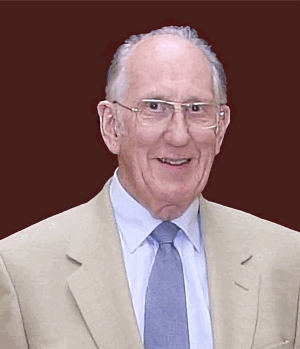
Alan Lidiard, who made pioneering contributions to condensed matter physics and to the physics community, sadly died in November 2020.
Alan was born on 9 May, 1928 at Waltham St. Lawrence, Berkshire. He studied Physics and then Theoretical Physics under Professor C.A. Coulson at King’s College, London, obtaining an MSc degree in 1950 and a PhD in 1952. He then obtained a Fulbright Fellowship which enabled him to spend two years in the USA, first as a research assistant at the University of Illinois under Professor F. Seitz and then at the University of California at Berkeley under Professor C. Kittel. He returned from the USA to take up a research fellowship in the Theoretical Division at AERE Harwell. In 1957, he moved to a lectureship in Theoretical Physics at Reading until 1961 when he returned to Harwell to set up the radiation damage theory group in the Theoretical Physics Division. (TPD) In 1966, he became the head of that division until his retirement.
TPD was a major centre of excellence for condensed matter physics and carried out ground-breaking work on the early development of computer codes for modelling in materials physics. Much of the impetus for this work came from a need to understand and predict the behaviour of nuclear fuel and radiation damage more broadly in order to satisfy the regulator. Lidiard understood that these challenges could not be overcome without a much better understanding of fundamental defect processes and that this would come from integrating computer predictions into experimental activities. Under Lidiard’s leadership, TPD provided an exciting and stimulating environment, which was enlivened by several distinguished physicists, including Marshall Stoneham, John Hubbard and Ron Bullough. Throughout his career, Lidiard retained active personal research interests in the theory of point defects in metals and non-metals. He was awarded a DSc by the University of London, was a Chartered Physicist, Fellow of the Institute of Physics and was awarded the Guthrie Medal in 1988. He was also a Fellow of the Royal Society of Chemistry.
Lidiard was an author of numerous papers on defect theory and, in 1993, he wrote the Seminal Tome, with Alan Allnatt, Atomic Transport in Solids. This volume provides the fundamental statistical theory of atomic transport in crystals, which provides the means by which processes occurring at the atomic level are related to macroscopic transport coefficient and other observable quantities. This seminal tome has stood the test of time. Alan was also the father of the so-called five frequency model. The model provided a theoretical framework for the solute and solvent diffusion in dilute alloys and permits the calculation of correlation factors for solute and solvent diffusion. Another landmark publication was his chapter on ionic conductivity published in the Handbuch der Physik in 1957 (https://doi.org/10.1007/978-3-642-45859-0_2) which established the basic theory for the analysis of conductivity data in terms of defect formation, binding and activation energies.
Lidiard made many contributions to the physics community. He was Chairman of the Solid State Sub-Committee of the Institute of Physics, Editor of the Journal of Physics C., and an Associate Editor of the Philosophical Magazine.
After he retired from Harwell, he took up visiting positions in the Physics Department at the University of Reading and the Department of Theoretical Chemistry at Oxford. Alan never believed in retirement! In these roles, he interacted with many students at both the undergraduate and postgraduate level, continuing to work with them on his main interests of defects in materials, in particular, developing methods of simulation of the theories of the heat of transport in insulators, metals and radiation damage. The heat of transport was a lifetime interest of Alan’s and perhaps the last remaining major problem in defect theory. He was generous with his time and was always kind and considerate of the student’s needs.
He built up a very successful collaboration with Professor Hermann Schmalzried’s group at the University of Hannover, which had its origin in their meeting in the 1950s. It would be fair to say that generations of UK–German solid-state scientists have published papers as a direct consequence of this friendship, based on mutual scientific respect. He was elected as a corresponding member of The Academy of Sciences of Göttingen, Mathematics and Natural Sciences Section.
Alan was an inspirational theoretical physicist, respected by all those who worked with, or knew him. He leaves behind an enduring contribution to physics.
In his spare time, Alan was a keen philatelist and was an active member of both the Harwell and of the North Berks Philatelic Society. He also regularly gave talks to other local societies. He was excellent company and had thoughts on many important topics of the day.
He was married thrice; his first marriage was dissolved, and after his second wife died, he married his childhood sweetheart, Diana, who survived him. He was also survived by his two daughters, Kate and Henrie, from his second marriage.
He died at home on 21 November 2020.
